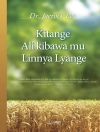Winner of the 2012 AJN (American Journal of Nursing) Book of the Year Award in the Hospice and Palliative Care category
In the 1960s, English physician and committed Christian Cicely Saunders introduced a new way of treating the terminally ill that she called ‘hospice care.’ Emphasizing a holistic and compassionate approach, her model led to the rapid growth of a worldwide hospice movement. Aspects of the early hospice model that stressed attention to the religious dimensions of death and dying, while still recognized and practiced, have developed outside the purview of academic inquiry and consideration. Meanwhile, global migration and multicultural diversification in the West have dramatically altered the profile of contemporary hospice care. In response to these developments, this volume is the first to critically explore how religious understandings of death are manifested and experienced in palliative care settings.
Contributors discuss how a ‘good death’ is conceived within the major religious traditions of Christianity, Islam, Hinduism, Judaism, Buddhism, Chinese religion, and Aboriginal spirituality. A variety of real-world examples are presented in case studies of a Buddhist hospice center in Thailand, Ugandan approaches to dying with HIV/AIDS, Punjabi extended-family hospice care, and pediatric palliative care. The work sheds new light on the significance of religious belief and practice at the end of life, at the many forms religious understanding can take, and at the spiritual pain that so often accompanies the physical pain of the dying person.
Зміст
Acknowledgments
Introduction
Harold Coward and Kelli I. Stajduhar
PART I. Religious Understandings of a Good Death
1. Cicely Saunders and the Development of Hospice Palliative Care
Michael Wright and David Clark
2. “Like a Ripe Fruit Separating Effortlessly from Its Vine” Religious Understandings of a Good Death: Hinduism
Anantanand Rambachan
3. Welcoming an Old Friend: Buddhist Perspectives on Good Death
Anne Bruce
4. Muslim Perspectives on a Good Death in Hospice and End-of-Life Care
Earle Waugh
5. Tradition and Change in Jewish Ideals Regarding a “Good” Death
Norman Ravvin
6. Dying Well in Christianity
Janet Soskice
7. Chinese Religions and Hospice Care
Edwin C. Hui and Danny C. Leung
PART II. Case Studies
8. Buddhist Hospice Care in Thailand
Robert Florida and Pinit Ratanakul
9. The Ugandan Way of Living and Dying
Michael L. Hadley and Godfrey Agupio
10. Punjabi Extended Family Hospice Care
Kamala Elizabeth Nayar
11. Seeking Physical, Cultural, Ethical, and Spritual “Safe Space” for a “Good Death”: The Experience of Indigenous Peoples in Accessing Hospice Care
Joseph M. Kaufert, Rhonda Wiebe, Margaret Lavallee, Patricia A. Kaufert
12. Caring for Children in Hospice and Palliative Care: The Spiritual/Religious Dimension
Betty Davies and Thomas Attig
13. Interfaith Chaplaincy in Hospice Palliative Care
Kelli I. Stajduhar and Coby Tschanz
Conclusion
Harold Coward and Kelli I. Stajduhar
Glossary of Terms and Abbreviations
Lee Blanding
Contributors
Index
Про автора
Harold Coward is Professor Emeritus of History and Founding Director of the Centre for Studies in Religion and Society at the University of Victoria. He is the author and editor of several books, including
The Perfectibility of Human Nature in Eastern and Western Thought, also published by SUNY Press.
Kelli I. Stajduhar is Associate Professor at the School of Nursing and Centre on Aging at the University of Victoria.







![Обкладинка Brian Schrag & Julisa Rowe: Community Arts for God's Purposes [Chinese] 貼近神心意的社群藝術 Обкладинка Brian Schrag & Julisa Rowe: Community Arts for God's Purposes [Chinese] 貼近神心意的社群藝術](https://static.worldofdigitals.com/thumb_webp/740/9781645083740.webp)




